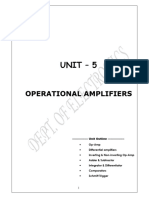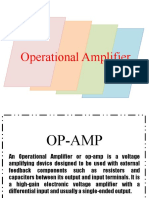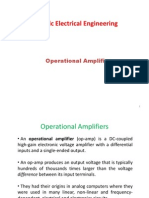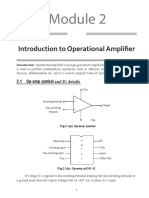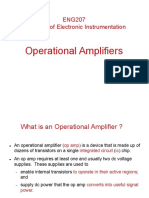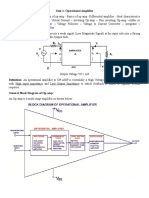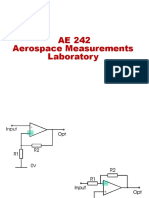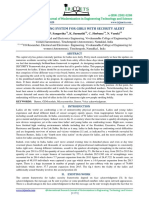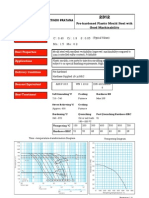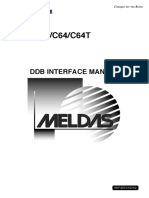0% found this document useful (0 votes)
29 views28 pagesModule 2 1a Operational Apmlifiers-1
Operational amplifiers (op-amps) are high-gain differential amplifiers used in various configurations such as inverting, non-inverting, and summing amplifiers. Key parameters include open-loop gain, input/output impedance, bandwidth, and slew rate, with ideal op-amps exhibiting infinite gain and resistance, while practical op-amps have high but finite values. Applications of op-amps include voltage followers, differentiators, integrators, and comparators, each serving specific functions in electronic circuits.
Uploaded by
arpitakp0406Copyright
© © All Rights Reserved
We take content rights seriously. If you suspect this is your content, claim it here.
Available Formats
Download as PDF, TXT or read online on Scribd
0% found this document useful (0 votes)
29 views28 pagesModule 2 1a Operational Apmlifiers-1
Operational amplifiers (op-amps) are high-gain differential amplifiers used in various configurations such as inverting, non-inverting, and summing amplifiers. Key parameters include open-loop gain, input/output impedance, bandwidth, and slew rate, with ideal op-amps exhibiting infinite gain and resistance, while practical op-amps have high but finite values. Applications of op-amps include voltage followers, differentiators, integrators, and comparators, each serving specific functions in electronic circuits.
Uploaded by
arpitakp0406Copyright
© © All Rights Reserved
We take content rights seriously. If you suspect this is your content, claim it here.
Available Formats
Download as PDF, TXT or read online on Scribd
/ 28








